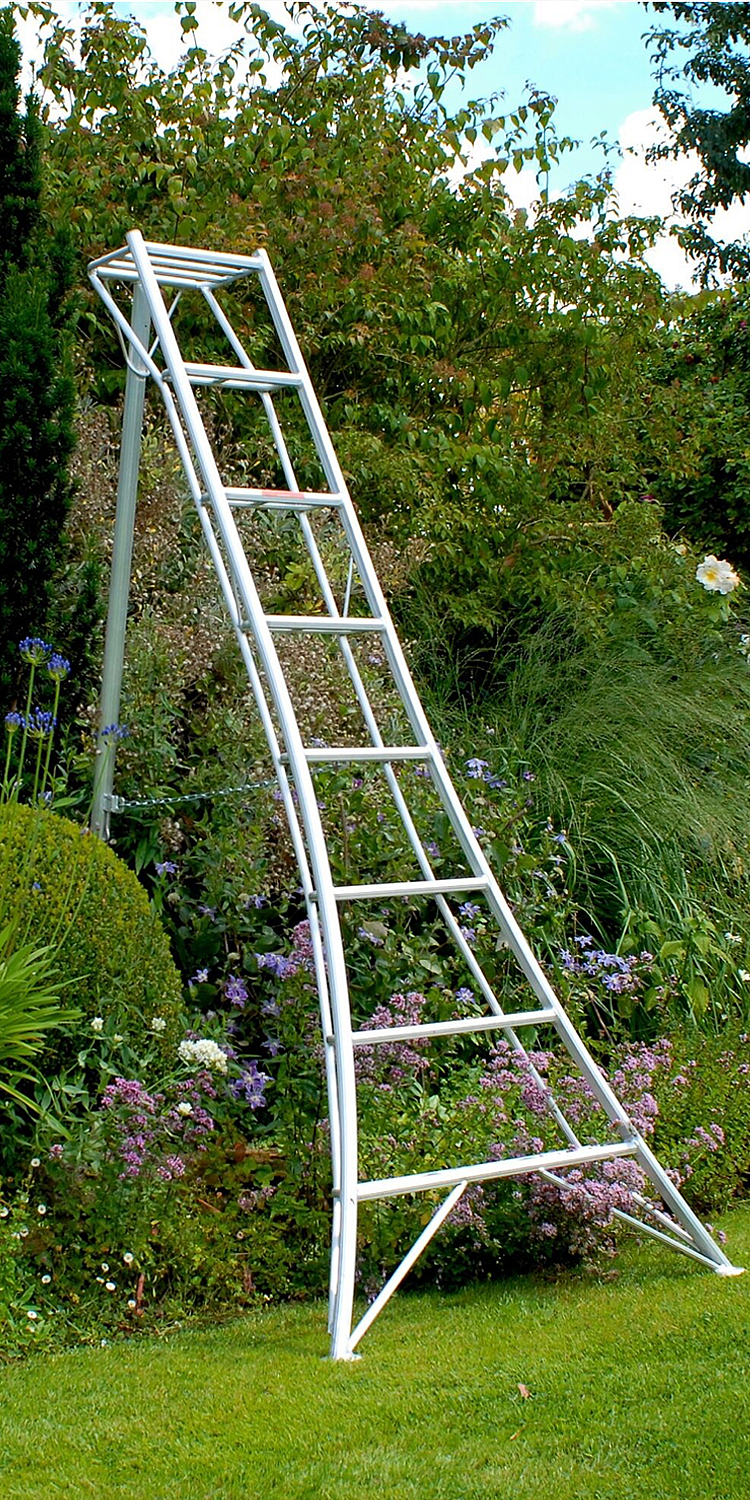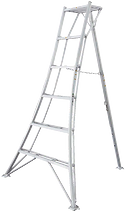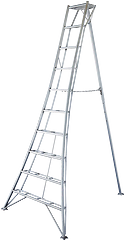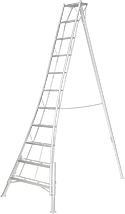Niwaki Tripod Ladder - Care & Maintenance
Three legs, wide base, no wobble
Our ladders are carefully crafted with safety, stability, durability, and manoeuvrability in mind. Whether you’re pruning a tree, shaping a box hedge, or cleaning the gutters, a safe, stable setup makes all the difference, but like any well-made tool, it must be used with care.
Take a moment to read through these tips, even if you’ve had the ladder for a few years. It’s mostly common sense, but there are a few things worth knowing to help you get the best out of your ladder – and feel safe while doing so.
While aluminium ladders are known for their rust and corrosion resistance they can still deteriorate over time. Factors like prolonged exposure to harsh weather, improper storage, and wear and tear can lead to damage and reduced stability, so this is the important stuff:
Using your ladder for the first time:
* Unpack the ladder and remove the protective wrapping from the clawed feet and other parts.
* Look over the ladder to check for any damage before use. If you spot anything unusual, give us a call.
When not to use the ladder:
* If any of the legs, steps, or welded joints are bent, dented, twisted, or otherwise damaged.
* If the pin or safety chain isn’t intact.
* If the clawed feet feel loose or broken.
Setting up the ladder:
* Double-check for any damage (see image).
* Make sure all moveable parts open and close smoothly - if the legs feel stiff or stuck, check for mud or dirt blocking the way.
* Ensure the safety chain is securely attached to the ladder body and can connect to the hook on the third leg.
* Test the extendable third leg and spring pin to make sure they lock and release correctly. If not, please don’t use the ladder.
Climbing the ladder:
* Only one person on the ladder at a time.
* Wear slip-resistant, closed-toe shoes.
* The clawed feet are suited to soft ground, grass, and soil, but be sure to use the optional rubber feet on timber, concrete, or other hard surfaces.
* Adjust the third leg so the steps are level and lock the pin securely.
* Make sure the third leg is fully perpendicular to the main ladder.
* Never climb higher than the third step from the top (or the second step on ladders under 2m).
* Check your surroundings for hazards like overhead cables, or uneven ground.
* Always face the ladder, using both hands and feet when climbing up or down.
* Lean against the steps to gain better balance and work safely.
* When working on a slope, adjust the third leg so you’re always working uphill.
Regular Checks:
* Keep your ladder clean and dry, and ensure all moveable components are working as they should. If anything feels stiff or stuck, check for obstructions.
* Inspect all components for signs of damage or corrosion.
* Make sure the third leg is undamaged (not twisted) and can be positioned fully perpendicular to the main ladder.
* Check that the pin and safety chain are both present and intact.
* Inspect the clawed feet. Do not use the ladder if they feel loose or damaged.
Transporting the ladder:
* Never carry the ladder by the third leg. Always secure the third leg on the retaining bracket before lifting.
* Be aware of your surroundings to avoid accidents or damage to people and property.
* If attaching to a vehicle, avoid pulling straps too tightly over the third leg as this may cause damage.
Maintenance:
* Keep your ladder clean and free from grease, oil, mud, and water.
* Use a gentle cleaner or detergent to remove dirt, and dry the ladder before use.
* Don’t leave detergent or cleaning fluid on the ladder without wiping it off. This can cause corrosion.
Storage:
* Store the ladder in a dry, sheltered place, out of direct sunlight or rain. Make sure it’s dry before putting it away.
* Never store anything on or stacked against the ladder – this could cause damage.
* Avoid storing the ladder near agricultural chemicals, cement, or lime products, which can corrode metal.
Common sense safety:
* If your ladder is damaged, please don’t try to fix it yourself. A compromised ladder is dangerous and could lead to serious injury.
* Never extend the safety chain with rope or extra links.
* Don’t weld or attach anything to the ladder.
* Respect the maximum load weight (including tools and equipment).





